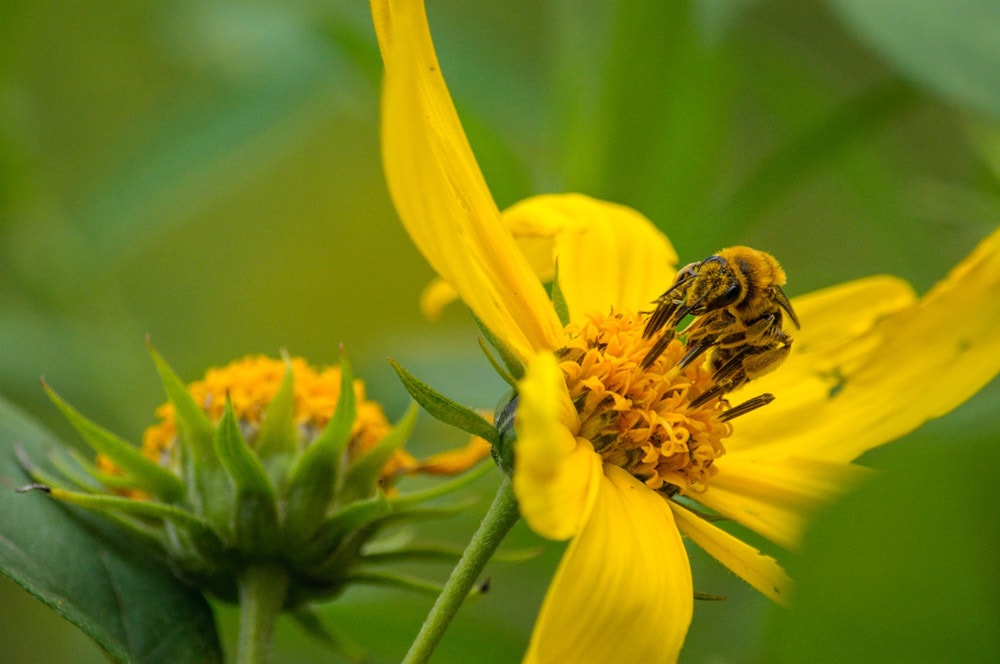Event Details
This event finished on 08 August 2019
- Venue: High Park Nature Centre
- Categories: Books & Education
- Cost: Free
- Listing: High Park Nature Centre
Join High Park this summer to learn all about Toronto’s native, wild bee populations in this year’s Speaker Series, Wild Bee Buzz Talks! Over the course of four lectures by local bee experts, they will explore everything from High Park’s bee phenology, to urban bee survival skills, and the ways you can protect these vital insects for years to come. Suggested Donation is $2 – $5. No Registration Required.
Speaker Series, Wild Bee Buzz Talks schedule:
June 20th – Wild for Bees: Gardening for Pollinators Wherever You Live
Speaker: Lorraine Johnson
Ages 8+
Talk Description:
In this illustrated talk, native plant gardening expert and author Lorraine Johnson will discuss how to create habitat gardens for native pollinators, particularly in small spaces and on balconies. The focus will be on beautiful combinations of native plants that provide nectar and pollen for native bees.
July 11th – Wild Bee Club & Wild Bees in High Park: Bees in Trees and Bee-yond!
6:00 – 7:00 PM – Wild Bee Club (special edition)
Speaker: Susan Frye
Talk Description:
This talk will provide an overview of Susan’s PhD research with wild bee communities in temperate forests. Specifically, her research investigates the arrangement of honeydew-producing insects in sugar maple canopies and how bees respond to honeydew as an alternative to floral nectar. Building upon this, she has also examined the distribution of temperate forest bees between the ground and forest canopy and how functional diversity can predict how bees use vertical space within these systems.
July 24th – Why Do Bees Live in Groups?
Speaker: Miriam Richards
Talk Description:
For many people, one of the most surprising aspects of bee behaviour is that most species are solitary, with only a minority living in social groups or colonies. In solitary bees, as in most insects, females construct their own nests and raise their offspring alone, without any help from any other individuals. In social bees, females share nests and may raise brood cooperatively. The extent of cooperation among females in a group varies greatly, from minimal nest-sharing in egalitarian societies, to strongly hierarchical societies in which despotic queens force workers to care for their offspring. The bees of southern Ontario include multiple types of social organization that illustrate the ecological pressures that favour social or solitary nesting in different circumstances.
August 8th – On a Quest for Bumble Bee Nests
Speaker: Amanda Liczner
Talk Description:
Habitat loss is contributing to bumble bee declines globally through increased urbanization but more importantly, due to agricultural intensification. These types of developments reduce important bumble bee resources including flowers (their food source) and nest sites (where the colony lives). Although habitat loss may be one of the main threats to bumble bees we know very little about their habitat requirements. This is especially true for bumble bee nesting habitat, which can be very difficult to locate – some bumble bee species live underground, for example, and they often conceal their nests to protect them from predators. Identifying the nesting habitat for bumble bees is important for their conservation to ensure that there is enough of it to sustain populations; nesting sites are an important population limiting resource. To help determine bumble bee nesting habitat I set out on a quest to identify bumble bee nests using a team of volunteers and dogs trained to detect bumble bee nest scent. Once bumble bee nests are found, we can measure the surrounding habitat variables to develop models that will help us determine the nesting habitat for different bumble bee species. These results will have important implications for the conservation and restoration of bumble bee habitat and will help further our understanding of bumble bee ecology.

